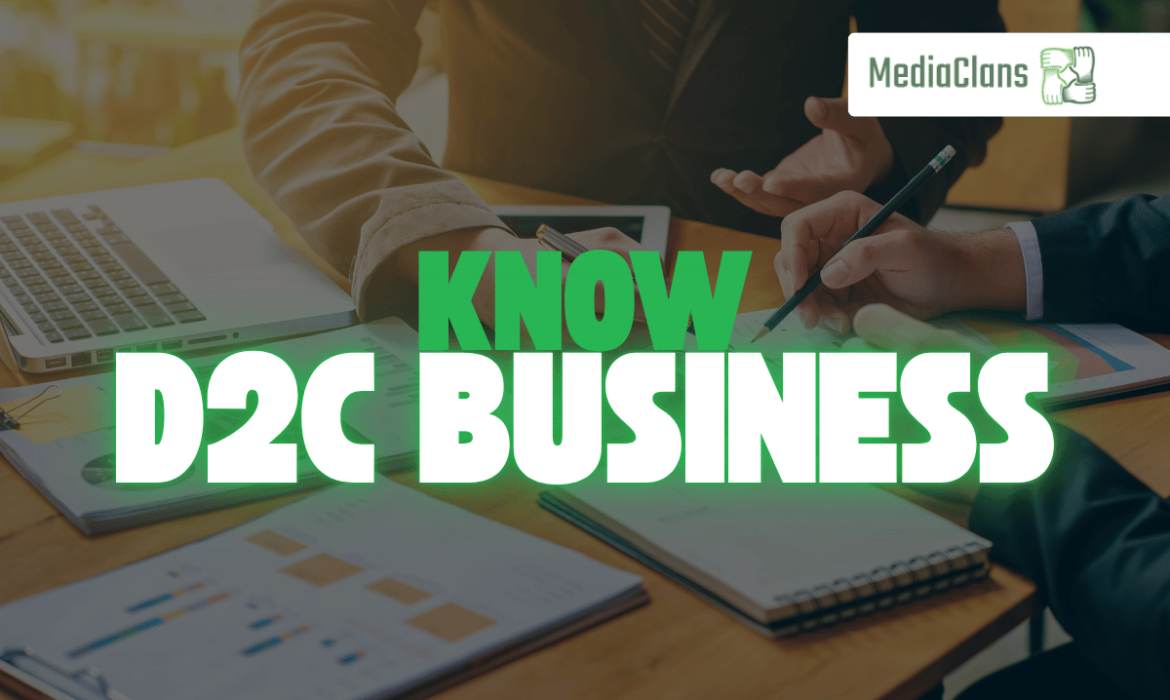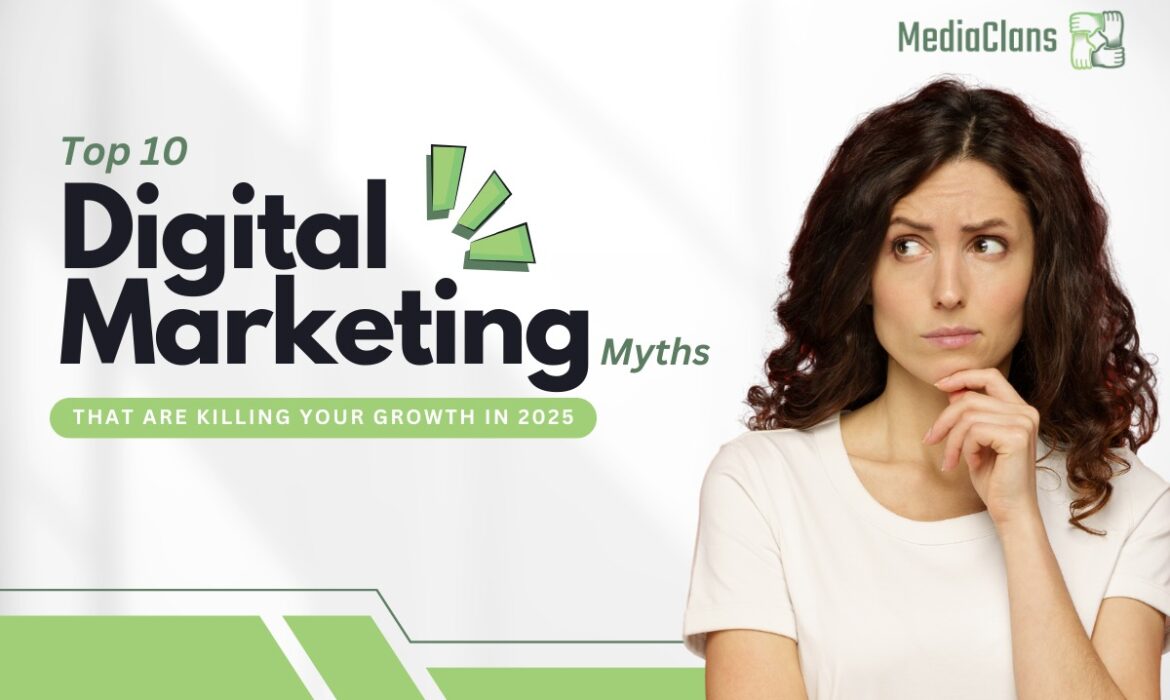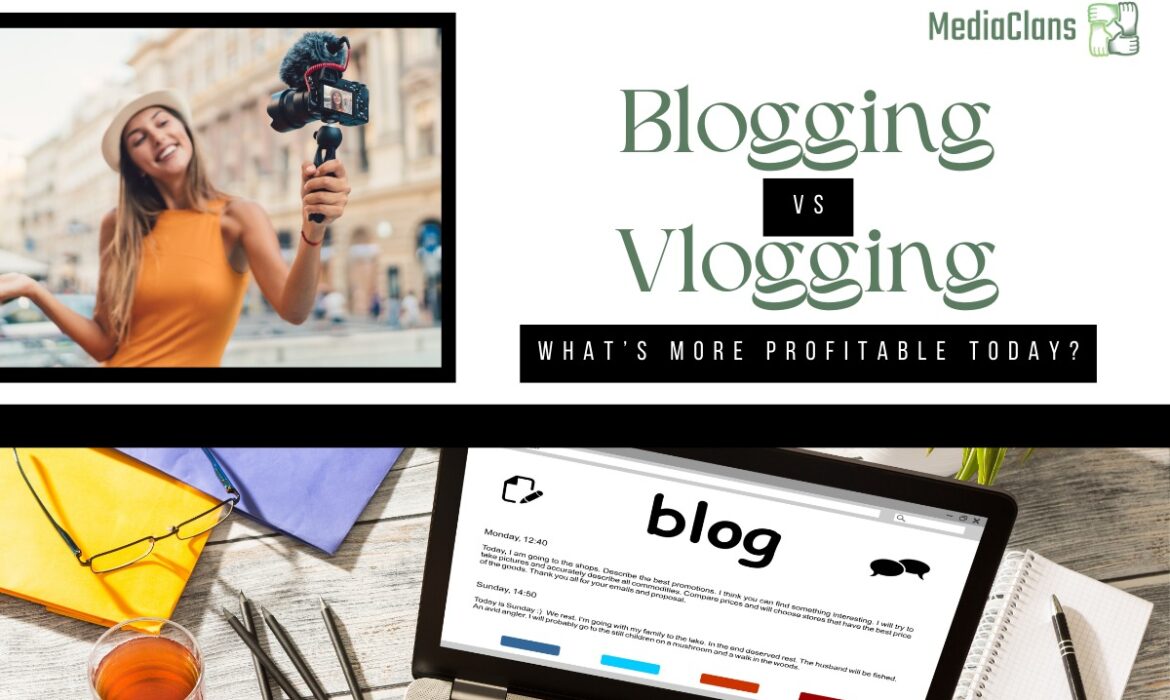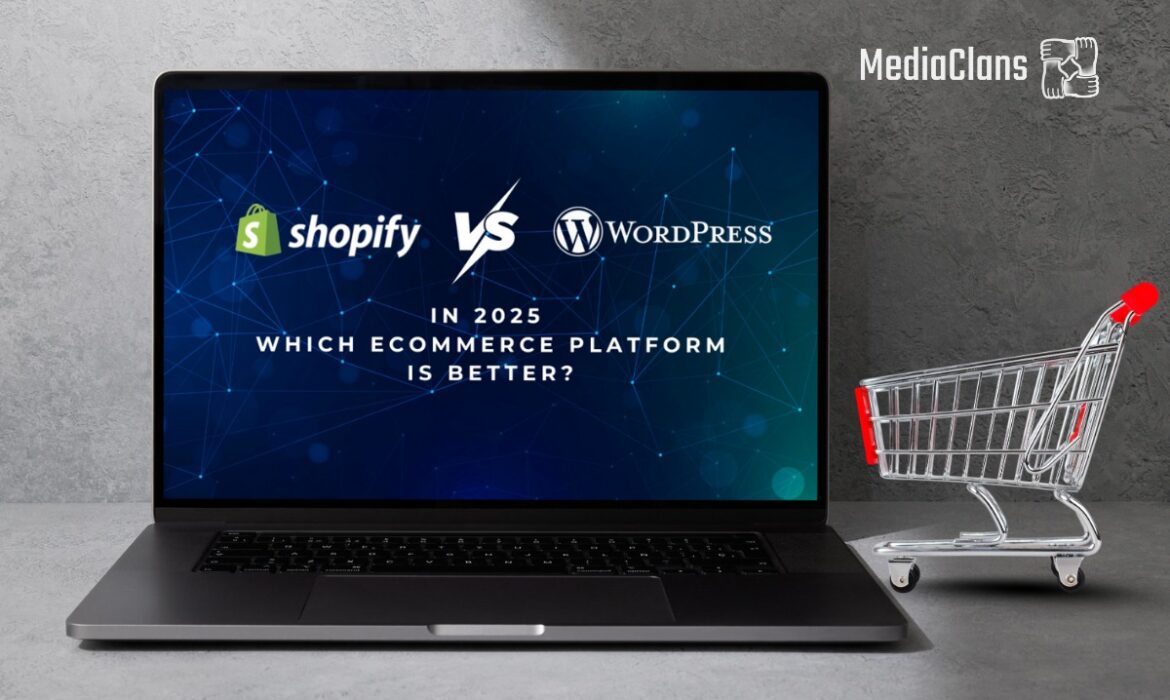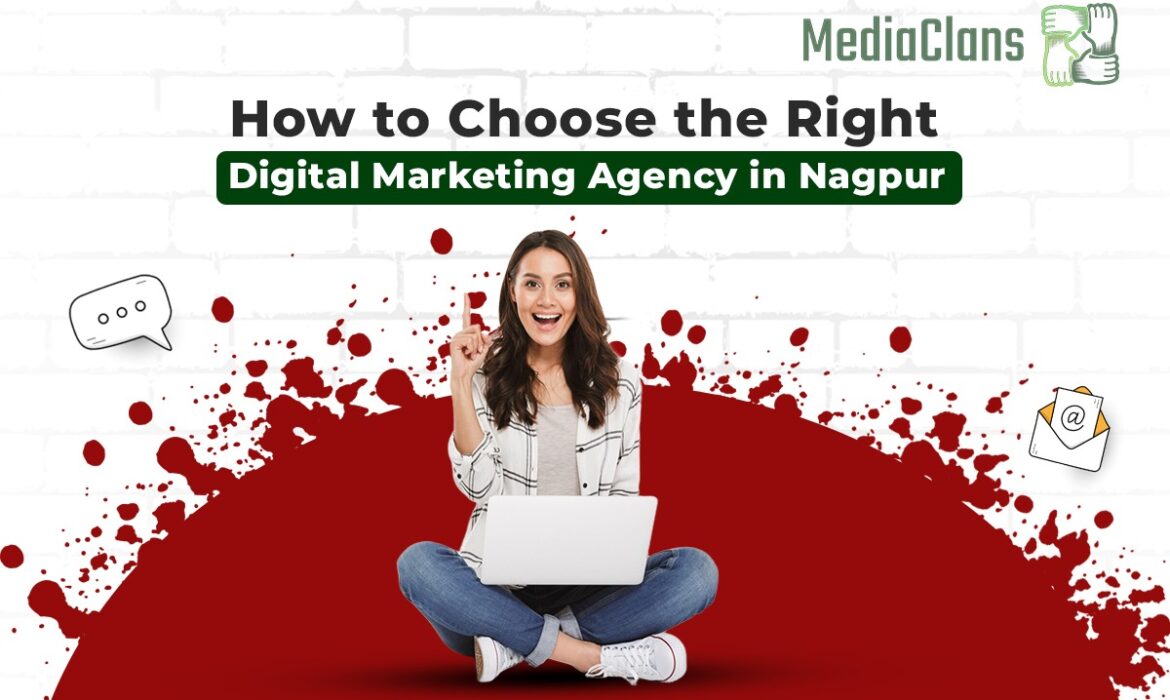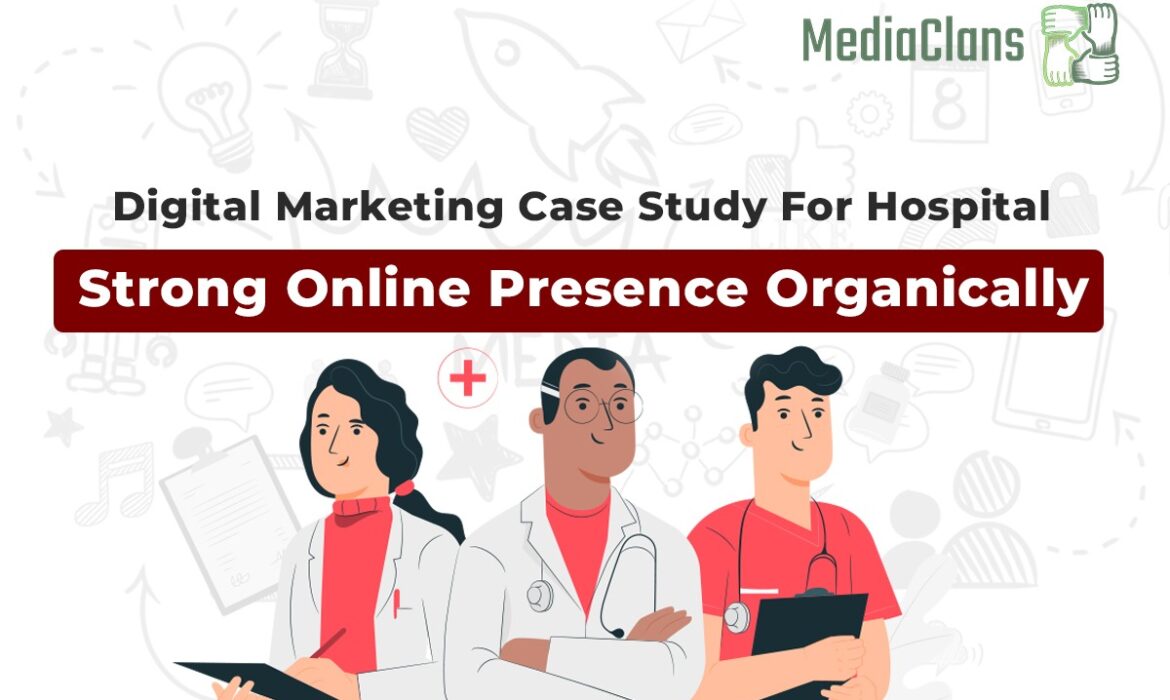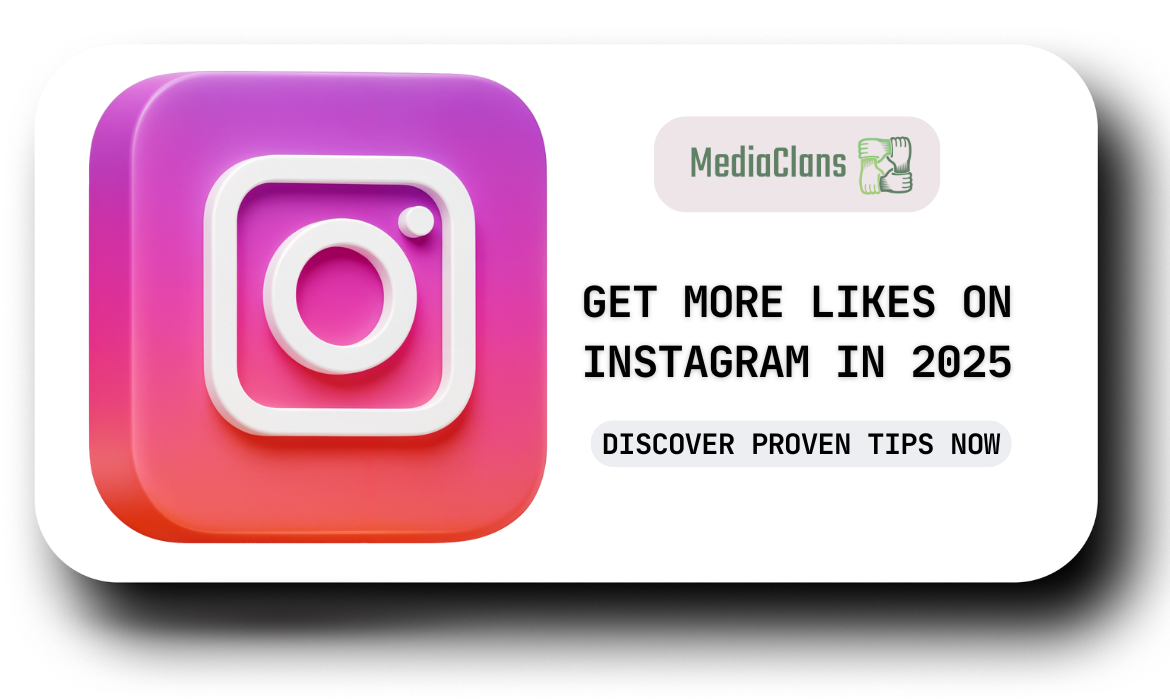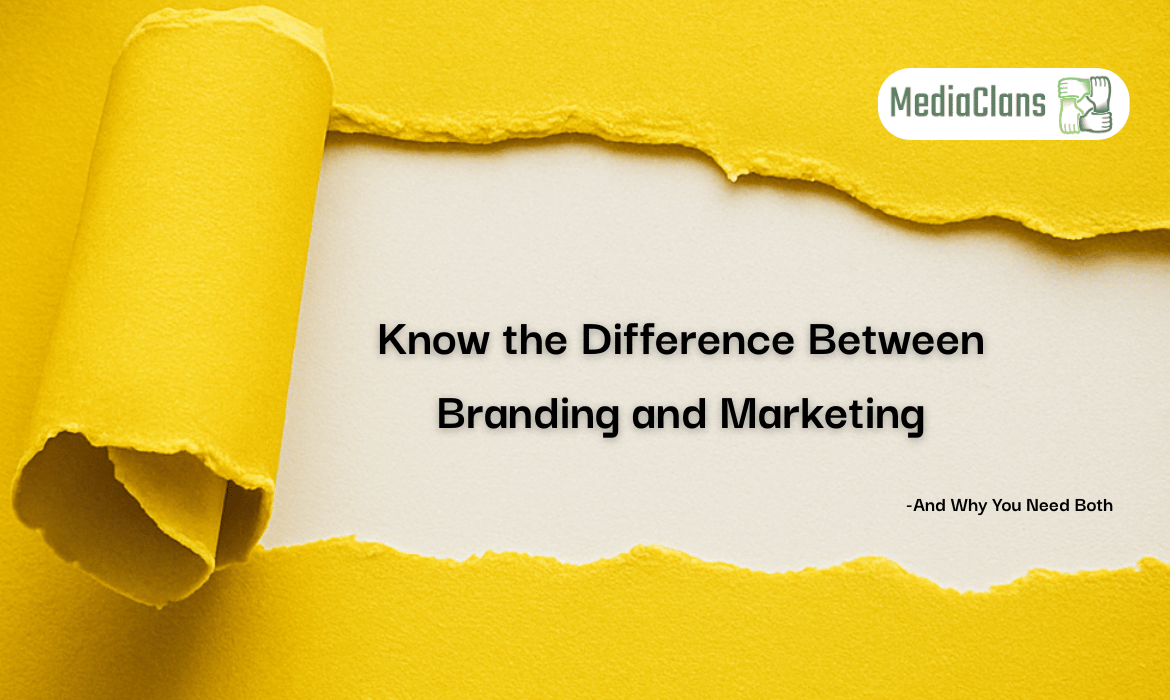What is D2C Business? A Beginner’s Guide to Direct-to-Consumer Brands in 2025
In recent years, D to C business models have disrupted the traditional retail industry. With the rapid growth of online shopping, social media marketing, and digital tools, Direct-to-Consumer (D2C) brands are redefining how companies connect with their audience.
But what exactly is a D2C business? How is it different from traditional retail or B2C models? And why is it gaining so much attention in 2025?
Let’s break it down.
What is D2C Business?
D to C business, or Direct-to-Consumer business, is a model where brands sell their products directly to customers—without relying on third-party retailers, distributors, or wholesalers.
Instead of placing products on supermarket shelves or third-party e-commerce platforms, D2C brands build their own websites, manage their own marketing, and control their customer experience end-to-end.
Key Features of a D to C Business
- No Middlemen: Brands handle manufacturing, marketing, and sales themselves.
- Own E-Commerce Channel: Sales happen directly via the brand’s website or app.
- Customer-Centric Approach: Direct communication helps personalize marketing and build loyalty.
- Data-Driven Decisions: D2C businesses use real-time customer data for product development and campaign optimization.
D2C Business vs Traditional Retail
| Feature | D2C Business | Traditional Retail |
| Sales Channel | Direct to consumer via brand website | Third-party retailers |
| Customer Data | Fully accessible to brand | Owned by retailers |
| Marketing | Brand-controlled | Shared or limited control |
| Profit Margins | Higher (no middleman cuts) | Lower (retailer margins apply) |
Why D to C Business is Thriving in 2025
- Lower Costs, Higher Profits: By eliminating intermediaries, D2C brands reduce costs and improve margins.
- Personalized Customer Experience: Access to customer data allows for tailored communication and targeted offers.
- Agility & Innovation: D2C brands can test, launch, and update products faster than legacy brands.
- Digital-First Generation: Millennials and Gen Z prefer shopping from brands that speak directly to them online.
Examples of Successful D2C Brands
- boAt – India’s homegrown electronics brand that scaled massively via online D2C strategy.
- Mamaearth – A personal care brand that gained traction through social media and D2C channels.
- Lenskart – While it has an offline presence now, it started with a strong D2C foundation online.
Challenges of Running a D to C Business
- High Customer Acquisition Costs (CAC)
- Logistics and Fulfilment Complexities
- Building Brand Trust Without Retail Presence
- Scaling While Maintaining Quality and Service
How to Start a D2C Business in 2025
- Find a Niche – Solve a specific customer problem.
- Develop a Unique Product – Focus on quality and packaging.
- Build a Website – Your brand’s home base. Use Shopify, WooCommerce, or custom builds.
- Use Performance Marketing – Leverage Google Ads, Meta Ads, and influencer partnerships.
- Engage via Social Media – D2C thrives on Instagram, YouTube, and WhatsApp.
- Focus on Customer Support – Build loyalty through fast service and feedback handling.
Future Trends in D2C Business (2025 & Beyond)
- AI-Powered Personalization
- WhatsApp Commerce
- Sustainable Packaging
- Voice Commerce
- Omnichannel D2C Models
Final Thoughts
D to C business is not just a buzzword—it’s a major shift in how brands connect with modern consumers. With increasing digital adoption, rising trust in online shopping, and affordable technology, D2C is the future of eCommerce in 2025.
Whether you’re a startup or an existing brand looking to scale online, adopting a D to C strategy can give you full control over your customer experience and build long-term brand loyalty.
Need help building your D2C brand?
Partner with Mediaclans—Nagpur’s trusted digital marketing agency. From website design to full-funnel paid campaigns, we help you scale your D to C business the right way.
Top 10 Digital Marketing Myths That Are Killing Your Growth in 2025
The digital marketing world evolves fast—but unfortunately, the myths surrounding it evolve even faster. As we step deeper into 2025, it’s time to separate fact from fiction. Many businesses are still falling for outdated beliefs, costing them visibility, conversions, and ultimately, growth.
In this blog, we’re busting the top 10 digital marketing myths that could be silently damaging your online success.
Myth #1: Digital Marketing Is Only About Social Media
The Truth:
Social media is just one channel in a much larger ecosystem. Effective digital marketing also includes SEO, paid ads, email marketing, content strategy, influencer outreach, and more. Relying solely on Instagram or Facebook limits your reach and ROI.
Myth #2: SEO Is Dead
The Truth:
SEO is more alive than ever—just smarter. Search algorithms in 2025 reward helpful, human-first content, proper keyword intent, page experience, and structured data. It’s not about keyword stuffing anymore; it’s about solving user queries.
Myth #3: More Website Traffic = More Sales
The Truth:
High traffic is meaningless if it doesn’t convert. What matters is qualified traffic—users who are ready to engage or buy. Focus on conversion rate optimization (CRO) and user experience, not just the numbers on Google Analytics.
Myth #4: You Can “Set It and Forget It”
The Truth:
Digital marketing is not a one-time task. Algorithms, consumer behavior, and competitors change constantly. Campaigns need regular optimization, testing, and tweaking to stay effective.
Myth #5: Paid Ads Work Instantly
The Truth:
While paid campaigns can deliver quick traffic, results depend on targeting, creatives, landing pages, and bidding strategy. It often takes A/B testing and fine-tuning to find the winning combination.
Myth #6: Email Marketing Is Dead
The Truth:
Email is still one of the highest ROI channels, especially for ecommerce, education, and service-based businesses. In 2025, personalized, segmented, and automated email flows outperform nearly every other channel.
Myth #7: Anyone Can Do Digital Marketing
The Truth:
Yes, tools are more accessible—but strategy, data analysis, and creative execution require expertise. A poorly planned campaign can waste budget and even harm your brand.
Myth #8: More Content = Better Results
The Truth:
Quality trumps quantity. Publishing thin, irrelevant, or AI-spun content won’t help. Instead, focus on creating useful, original, and engaging content tailored to your audience and business goals.
Myth #9: Negative Reviews Should Be Deleted
The Truth:
Trying to hide negative feedback can backfire. Instead, respond professionally, resolve issues, and use feedback to improve. In fact, authentic responses can boost brand trust.
Myth #10: Digital Marketing Guarantees Quick Results
The Truth:
Digital marketing is not magic. While some channels (like paid ads) can bring fast visibility, sustainable success takes time, consistency, and data-driven decision-making.
Final Thoughts: Don’t Let These Myths Kill Your Growth
Believing in these myths about digital marketing in 2025 can prevent your business from reaching its full potential. The key is to stay informed, adaptable, and strategy-focused. Remember, real digital marketing success comes from deep understanding, not shortcuts.
Need Help Navigating the Truth About Digital Marketing?
At Mediaclans, we craft transparent, performance-driven strategies tailored to your business goals. Whether it’s SEO, paid ads, content marketing, or social media—we do what works, not what trends.
Blogging vs Vlogging in 2025 – Which Content Format is More Profitable?
In the digital age, content creation has become a mainstream profession. Whether you’re a solopreneur, influencer, or business owner, choosing the right format—blogging or vlogging—can significantly impact your growth and income. While both have their own advantages, the question remains: which is more profitable in 2025?
This blog compares blogging vs vlogging across multiple dimensions, including startup costs, revenue models, scalability, and long-term sustainability, helping you decide the best path for your goals.
What is Blogging?
Blogging is the act of creating and publishing written content on a website, usually organized by niche (e.g., health, tech, travel). It’s ideal for those who enjoy writing, research, and SEO-focused content marketing.
How Do Bloggers Make Money?
- Display advertising (Google AdSense, Mediavine, etc.)
- Affiliate marketing (earning commissions from product referrals)
- Sponsored content from brands
- Selling digital products (ebooks, templates, courses)
- Email list monetization (via newsletters and funnels)
What is Vlogging?
Vlogging involves creating video content, often shared on platforms like YouTube, Instagram, or TikTok. Vlogs can be personal, educational, entertaining, or promotional, and they’re especially powerful for building a visual, emotional connection with an audience.
How Do Vloggers Make Money?
- YouTube ad revenue through Google AdSense
- Sponsorships and brand deals
- Affiliate links in video descriptions
- Merchandise and product sales
- Crowdfunding and memberships (via Patreon, YouTube Memberships)
Blogging vs Vlogging – A Profitability Breakdown
| Factor | Blogging | Vlogging |
| Initial Investment | Low (domain, hosting, tools) | Medium to High (camera, lighting, editing software) |
| Monetization Speed | Moderate | Faster if content goes viral |
| Passive Income Potential | High (via SEO and evergreen posts) | Moderate (requires regular uploads) |
| Scalability | High | High, with team support |
| Sponsorship Appeal | Moderate | High (especially in lifestyle/beauty niches) |
| Time Commitment | Lower (writing + editing) | Higher (shooting + editing) |
Which is More Profitable in 2025?
The short answer: It depends on your strengths and goals.
Choose Blogging if:
- You’re comfortable with writing and SEO
- You want to build a content asset that grows over time
- You prefer long-term, stable income over quick wins
- You plan to promote affiliate products or digital courses
Choose Vlogging if:
- You enjoy being on camera and storytelling
- You want to build a personal brand with strong visual presence
- You’re targeting sponsorships and faster audience engagement
- You can consistently create video content
Combining Blogging and Vlogging: The Best of Both Worlds
In 2025, many successful creators use both blogging and vlogging to increase reach and diversify income. Here’s how to integrate them:
- Create a blog post for each YouTube video, boosting SEO
- Embed videos within blogs to increase time-on-page and rank better
- Use blog content to script or inspire vlogs
- Promote affiliate products via both platforms for higher conversions
- Build an email list through blog CTAs and nurture it with video content
Final Thoughts
Both blogging and vlogging are profitable—if done right. Blogging may offer more stability and long-term SEO benefits, while vlogging provides faster engagement and stronger brand visibility. Your choice should align with your skills, audience, and business model.
If you’re serious about content creation in 2025, consider starting with one and gradually incorporating the other. The synergy of text and video can take your online presence to the next level.
Need Help Launching Your Blog or Vlog?
At Mediaclans, we help creators, startups, and entrepreneurs build impactful online platforms. Whether you’re launching a blog with high-ranking SEO content or starting a YouTube channel with a conversion-focused strategy, we’ve got you covered.
Visit Mediaclans. in and book a free consultation to turn your content vision into a profitable digital asset.
Shopify vs WordPress in 2025 – Which Ecommerce Platform is Better?
If you’re starting an e-commerce website in 2025, you’re likely torn between two giants: Shopify and WordPress. Both platforms dominate the online retail space, but which one is the best ecommerce platform for your needs? This in-depth comparison of Shopify vs WordPress will help you make the right decision.
1. Overview: Shopify vs WordPress
- Shopify is a dedicated ecommerce platform with everything built-in—hosting, payment gateways, SEO tools, and customer support.
- WordPress becomes ecommerce-ready with plugins like WooCommerce, making it more flexible but slightly complex.
2. Ease of Use
- Shopify: User-friendly, quick setup, great for beginners.
- WordPress: Requires setup and plugin management but offers higher flexibility.
Verdict: For simplicity, Shopify is ideal. For customization, choose WordPress.
3. Design & Customization
- Shopify: Offers stunning ecommerce templates, but with limited layout freedom.
- WordPress: Extensive control with thousands of free and premium themes and design plugins.
Verdict: WordPress wins in customization.
4. Ecommerce Features & Tools
- Shopify: Provides advanced inventory management, multichannel selling, and shipping options by default.
- WooCommerce: Offers similar features via plugins, though setup may take longer.
Verdict: Shopify offers faster access to core ecommerce features.
5. SEO for Ecommerce
- Shopify includes basic SEO options like meta titles, redirects, and sitemaps.
- WordPress, with plugins like Yoast SEO, gives you complete control of your SEO for ecommerce.
Verdict: WordPress offers better SEO optimization capabilities.
6. Payment Gateways & Fees
- Shopify charges a fee if you don’t use Shopify Payments.
- WordPress lets you integrate multiple gateways like Razorpay, PayPal, and Stripe freely via plugins.
Verdict: WordPress offers more freedom and less cost.
7. Pricing Comparison
- Shopify has predictable monthly pricing starting at $39/month.
- WordPress is free but includes hosting, theme, and plugin expenses.
Verdict: WordPress can be more cost-effective if you manage it well.
8. Security & Maintenance
- Shopify handles SSL, updates, and security patches for you.
- WordPress users need to ensure plugin updates and security setups manually.
Verdict: Shopify is more hands-off and secure by default.
9. Customer Support
- Shopify offers 24/7 live support.
- WordPress relies on forums, community, or plugin-specific support.
Verdict: Shopify provides faster, centralized help.
Final Verdict: Shopify vs WordPress 2025
| Criteria | Best Choice |
| Ease of Use | Shopify |
| Customization | WordPress |
| SEO | WordPress |
| Features | Shopify |
| Cost Control | WordPress |
| Support | Shopify |
Whether you want control or convenience, both platforms are leaders in the e-commerce platform space. But choosing the right one depends on your business goals, tech skill, and budget.
Ready to Build or Scale Your E-commerce Website?
Let the experts at MediaClans, a leading digital agency in Nagpur, build your Shopify or WordPress ecommerce website tailored to your business. Whether you’re a startup or scaling brand, we’ll help you grow online—fast.
Best Time and Day to Send Marketing Emails for Maximum Impact
You’ve spent time crafting the perfect email—clear messaging, engaging design, and a powerful call to action. But without the right timing, even the best marketing email may go unnoticed.
In this blog, we reveal the best time and day to send marketing emails, based on industry data and real-world results from client campaigns at Mediaclans. Optimizing your email marketing schedule is one of the most effective ways to increase open rates, click-through rates, and customer engagement.
Why Timing Is Crucial in Email Marketing
Your audience receives dozens of emails daily. When your email lands in their inbox can determine whether it gets opened or ignored. The timing of your email marketing campaign can directly influence:
- Open rate
- Click-through rate
- Conversion rate
- Unsubscribe rate
- Overall campaign ROI
At Mediaclans, we consider timing a core component of any successful email marketing strategy.
Best Days to Send Marketing Emails
Our experience running campaigns for a wide range of industries has shown that certain days consistently outperform others. Supported by email marketing research and A/B testing, the following days are optimal:
Tuesday
Tuesday is widely considered the best day to send marketing emails. Engagement peaks as recipients are more settled into their workweek and attentive to communication.
Thursday
Thursday performs well in terms of click-through and response rates. It’s ideal for sending product promotions, content offers, or newsletters.
Wednesday
Wednesday is another strong performer, especially for B2B campaigns. People are actively checking their inboxes during midweek.
Mediaclans Strategy Insight
At Mediaclans, we have implemented this weekday email timeline across various industries including e-commerce, healthcare, and professional services. Based on thorough campaign testing, we found that Tuesday and Thursday mornings consistently generated the highest engagement and conversions. These insights help us refine our email marketing strategy for maximum impact.
Worst Days to Send Emails
While testing is always important, here are days that generally underperform:
Monday
Inboxes are often flooded, and recipients are focused on catching up. Engagement rates tend to be low.
Friday
Most people begin to disconnect by Friday afternoon, which results in lower open and click-through rates.
Weekends
Saturday and Sunday typically see the lowest performance for email campaigns unless the product or service is time-sensitive.
Best Time to Send Marketing Emails
Choosing the right time of day is just as important as selecting the right day. Based on campaign performance data, these timeframes are recommended:
10 AM to 11 AM
This is when people are actively working and checking their emails. Engagement tends to be highest in this window.
1 PM to 2 PM
Post-lunch hours are a great time to re-engage your audience.
6 PM to 7 PM
Evening hours work well for B2C campaigns, as people often check emails on their mobile devices during downtime.
Key Factors That Influence Email Timing
No single time works for every business. Consider these variables when planning your email marketing campaign:
- Audience type (B2B or B2C)
- Location and time zones
- Product or service category
- Subscriber behavior
- Seasonality and campaign objectives
At Mediaclans, we analyze these elements and run continuous tests to refine the email marketing strategy for each client.
How to Identify the Right Time for Your Business
- Review historical campaign data
Use open rates and click-through rates to determine when your audience is most responsive. - Run A/B tests
Experiment with sending the same email at different times to measure engagement differences. - Use segmentation
Split your audience into smaller segments based on time zone, behavior, or demographics. - Automate smartly
Use automation tools that allow send time optimization based on subscriber behavior.
Why Choose Mediaclans for Email Marketing
At Mediaclans, we go beyond just sending emails. We develop and execute email marketing campaigns that align with your audience’s habits and your business goals. Our approach includes:
- Customized email scheduling
- A/B testing and performance tracking
- List segmentation and personalization
- Data-driven strategies tailored to your industry
Whether your goal is nurturing leads or increasing conversions, Mediaclans delivers measurable results through precise email execution.
Mastering the best time and day to send marketing emails can drastically improve the effectiveness of your campaigns. While general trends offer a helpful starting point, continuous testing and audience analysis are key to long-term success.
Let Mediaclans help you build a winning email marketing strategy with timing that works. Contact us today to start seeing real results from your campaigns.
How to Choose the Right Digital Marketing Agency in Nagpur
Finding the right Digital Marketing Agency in Nagpur isn’t just about comparing packages or picking the one with the flashiest website. It’s about finding a team that understands your business, your audience, and your local market.
Whether you’re a hospital, coaching class, real estate firm, or retail brand in Nagpur, digital presence is now a necessity, not an option. This guide will help you understand what to look for when choosing the right partner to grow your business online.
Why Local Matters When Choosing a Digital Marketing Agency in Nagpur
Choosing a local agency offers several advantages:
- They understand the market: A Nagpur-based digital team knows local trends, festivals, language preferences, and customer behavior.
- Better communication: You can meet face-to-face, conduct store visits, and stay in sync more easily.
- Region-focused strategy: Local search terms like “orthopedic clinic in Nagpur” or “best coaching for NEET Nagpur” are more effectively targeted by local experts.
Key Services to Expect from a Digital Marketing Agency in Nagpur
When evaluating any agency, check if they offer these essentials:
1. Search Engine Optimization (SEO)
Helps your business appear on top of Google when people search for your products or services.
- Local keyword targeting
- Google Business Profile optimization
- On-page & off-page SEO
2. Website Design & Development
Your website is your digital storefront. It should be fast, mobile-friendly, and optimized to convert.
- Responsive design
- Built-in lead forms & WhatsApp chat
- Optimized for search engines
3. Social Media Marketing
Helps you build a loyal customer base and increase brand awareness.
- Content strategy tailored for platforms like Instagram, Facebook, and LinkedIn
- Reels, stories, posts, and local engagement
- Festival & local campaign planning
4. Content Marketing
Content builds trust, improves SEO, and educates your audience.
- Blog writing focused on local keywords
- Video scripts, service descriptions, and FAQs
- Medical, educational, and real estate content specialization
How to Evaluate the Best Digital Marketing Agency in Nagpur
Here’s a checklist before you decide:
Do they have experience with businesses in Nagpur or your industry?
Can they show past results (rankings, traffic, engagement)?
Do they explain strategies clearly or just talk in jargon?
Are they offering custom solutions, not fixed packages?
Do they focus on long-term growth, not quick wins?
Common Mistakes to Avoid
- Choosing solely based on low price
- Ignoring long-term strategy in favor of “viral growth”
- Not checking local SEO expertise
- Overlooking content quality and user experience
Take a Strategic Step Forward
The right Digital Marketing Agency in Nagpur won’t just “do marketing” for you. They’ll become your partner in growth. Choose a team that asks the right questions, listens to your goals, and builds a roadmap around your audience.
Need help deciding what your business needs online?
At Mediaclans, we help businesses in Nagpur make informed decisions, not just marketing noise.
Hospital Digital Marketing Case Study: How Mediaclans Helped LGI Hospital Build a Strong Online Presence Organically
In this hospital digital marketing case study, we explore how Mediaclans helped LGI Hospital—one of Nagpur’s trusted healthcare providers—grow its digital presence organically. With a focus on search engine optimization, content marketing, and local visibility, the hospital saw significant improvements in patient engagement without spending on paid advertisements.
About LGI Hospital
LGI Hospital is a multi-specialty medical facility in Nagpur, known for its excellence in gastroenterology, endoscopy, and general surgery. Despite their strong offline reputation, their digital visibility was limited, which meant missed opportunities to reach patients online.
The Challenge
Before working with Mediaclans, LGI Hospital struggled with:
- Minimal organic traffic
- No rankings for local treatment-based keywords
- Outdated and poorly structured website
- Weak local presence on Google Maps
- No regular blog or content activity
- Inconsistent brand presence on social media
Goals of the Campaign
The key objectives of this hospital digital marketing campaign were:
- Improve search engine visibility for treatment-related local keywords
- Build a fast, user-friendly, and SEO-optimized website
- Increase organic inquiries through valuable content
- Optimize Google Business Profile for local discovery
- Establish thought leadership through informative blogs and FAQs
- Build a consistent, trustworthy social media identity
Digital Marketing Strategy for LGI Hospital
1. Website Redesign and SEO Optimization
We started by rebuilding the website with SEO and patient experience in mind:
- Created service-specific pages (e.g., piles treatment, endoscopy)
- Structured content with proper headings, keywords, meta tags, and schema markup
- Improved site speed and mobile responsiveness
- Integrated conversion-focused CTAs like “Book Appointment” and “Call Now”
Result:
Enhanced user experience, improved crawlability, and a solid SEO foundation.
2. Google Business Profile Optimization
Mediaclans optimized LGI Hospital’s local listing with:
- Updated NAP (Name, Address, Phone) information
- Service categories and descriptions
- High-quality images of the hospital and staff
- Regular updates and events
- Review generation and response management
Result:
Significant increase in visibility on Google Maps and discovery through local search queries.
3. Local SEO and Keyword Targeting
The SEO strategy focused on targeting high-intent, location-based keywords such as:
- “piles treatment in Nagpur”
- “gastroenterologist near me”
- “endoscopy clinic in Nagpur”
We optimized key elements like meta titles, headers, alt texts, internal linking, and FAQ sections based on these keywords.
Result:
Over 20 keywords ranked on the first page of Google within 4–6 months, driving consistent traffic.
4. Blog and Content Marketing
We created a blog focused on patient education and awareness, with topics like:
- “When Should You Visit a Gastroenterologist in Nagpur?”
- “Piles vs Fissures: Understanding the Difference”
- “What to Expect During an Endoscopy”
The content was crafted using real patient queries and structured to target long-tail local keywords.
Result:
Regular organic traffic from search engines, improved time-on-page, and increased visibility as a trusted source of medical information.
5. Social Media Branding and Consistency
We worked on enhancing LGI Hospital’s brand across platforms by:
- Introducing doctors and their specialties
- Sharing awareness content around diseases and symptoms
- Posting behind-the-scenes hospital updates
- Educating users on frequently asked health questions
Result:
Improved community engagement and credibility among the local audience.
Results After 6 Months (Organic Only)
| Metric | Before | After 6 Months | Growth |
| Monthly Website Visitors | ~300 | ~1200 | 4X |
| Keywords Ranking on Page 1 | Few | 20+ | Improved SEO |
| Monthly Online Inquiries | Very Low | 70–100 | Consistent Growth |
| Google Business Profile Views | Low | 4X Increase | Enhanced Local Discovery |
Client Feedback
“We were looking to increase our online visibility without relying on ads. Mediaclans helped us build a content-driven, SEO-focused digital strategy. Now, more patients are finding and trusting us online.”
— Dr. Prashant Bhandarkar, LGI Hospital
This hospital digital marketing case study proves that paid ads aren’t the only path to digital success. With the right blend of SEO, local optimization, valuable content, and brand-building, hospitals can achieve real, lasting growth online.
If you’re a hospital or clinic looking for sustainable digital results, Mediaclans is here to help.
Let’s Grow Your Hospital Organically
Want to replicate LGI Hospital’s success?
Contact Mediaclans for a free digital audit and discover how your hospital can grow organically through content and SEO.
Top 10 Benefits of Digital Marketing for Small Businesses in 2025
Small businesses in India and across the globe face stiff competition in 2025. Whether you run a local shop, a startup, or a home-based service, one thing is clear: your customers are online. That’s why digital marketing for small businesses is more important than ever. It offers smart, affordable, and effective ways to reach your target audience, build your brand, and increase sales.
Here are the top 10 benefits of digital marketing that can help your small business succeed this year.
1. Cost-Effective Marketing
Traditional advertising, like print, radio, or billboards, can be expensive. Digital marketing offers affordable tools such as social media marketing, email campaigns, and paid ads. These options allow small businesses to achieve big results with a smaller budget.
Example: With just ₹1,000, a local business can reach thousands of people in its area through Facebook or Google Ads.
2. Accurate Audience Targeting
Digital marketing allows you to choose exactly who sees your ads. You can target people based on age, gender, location, interest, profession, and even behavior.
This ensures your marketing efforts reach people who are most likely to become your customers, improving the return on investment.
3. Measurable Results
One major benefit of digital marketing is the ability to track every result. You can monitor website visits, ad clicks, purchases, email opens, and more. Tools like Google Analytics and Meta Ads Manager help you understand what works and where to improve.
4. Stronger Customer Relationships
Digital platforms make it easier to talk to your customers. You can respond to messages, comments, and feedback in real time. Sending follow-up emails or special offers builds trust and encourages repeat business.
This engagement creates a loyal customer base and increases your brand reputation.
5. Increased Online Visibility
Your business may be small, but with digital marketing, your reach can be massive. Search engine optimization (SEO) helps your website rank higher on Google. Meanwhile, social media platforms boost your visibility and keep your brand active in front of potential customers.
Having a strong digital presence means customers can find you 24/7.
6. Long-Term Benefits with SEO
Investing in SEO for small businesses is a long-term strategy. Once your website ranks for key terms like “best interior designer in Nagpur” or “organic food delivery,” it brings consistent traffic and leads without additional ad spend.
This helps reduce your marketing costs over time.
7. Higher Conversions
Digital marketing allows you to guide potential customers through a well-planned journey. From clicking an ad to filling a contact form or making a purchase, each step can be optimized for better conversion.
Landing pages, lead magnets, and retargeting ads all help improve sales results.
8. Mobile Marketing
Most consumers today browse and shop using mobile phones. With mobile-friendly websites, SMS campaigns, and mobile ads, you can effectively reach your audience where they are.
In 2025, mobile-first marketing is not optional—it’s essential.
9. Compete with Bigger Brands
Digital marketing levels the playing field. Even as a small business, you can compete with bigger companies through smart targeting, quality content, and consistent engagement.
A well-designed website or an active Instagram page can give your business a professional edge, regardless of size.
10. Real-Time Adjustments
If a campaign isn’t performing, you can pause or edit it instantly. Unlike traditional marketing, digital ads can be changed at any time. This flexibility helps you reduce waste and adapt quickly to trends or customer needs.
Real-time changes save both time and money while improving results.
The benefits of digital marketing for small businesses are clear. It helps you connect with the right people, grow your brand, and increase sales — all while staying within your budget.
In 2025, having a smart and strong digital marketing plan is the key to small business growth.
Work With Experts Who Understand Small Businesses
If you’re a business owner looking to grow online, Mediaclans is here to help. We offer complete digital marketing solutions designed for small businesses — from SEO and paid ads to content and social media marketing.
Partner with Mediaclans — the trusted digital marketing agency for small businesses. Let us help you get more leads, more customers, and real growth.
Visit www.mediaclans.com to get started.
Top Tips to Get More Likes on Instagram and Increase Followers Organically in 2025
Top Tips to Get More Likes on Instagram and Increase Followers Organically in 2025
If you’re wondering how to get more likes on Instagram without relying on bots or paid ads, you’re not alone. In 2025, organic growth on Instagram is more achievable than ever, provided you follow the right strategies.
This guide covers practical tips to increase your Instagram followers organically, improve post engagement, and build a loyal online community.
1. Optimize Your Instagram Profile
Your profile plays a key role in converting visitors into followers.
- Use a clean, professional profile photo
- Add a keyword-optimized bio (e.g., “Fitness Coach | Mumbai”)
- Include one clear call-to-action link
- Choose a username that’s simple and search-friendly
Optimizing your profile boosts credibility and helps you get more likes on Instagram by attracting the right audience.
2. Create High-Quality Content Consistently
High-quality content is the foundation of organic growth.
- Share well-composed images and videos
- Use relevant, trending audio in Reels
- Post educational carousels, infographics, or storytelling content
- Maintain brand consistency in style and tone
Consistency in content is one of the top Instagram growth tips in 2025.
3. Use Targeted Hashtags Strategically
Hashtags can still drive a lot of discovery—if used correctly.
- Mix high, medium, and low-competition hashtags
- Avoid banned or irrelevant tags
- Create a unique branded hashtag for your business
- Use up to 25 relevant hashtags per post for better reach
Strategic hashtags help you get more likes on Instagram by improving visibility.
4. Engage With Your Audience
Instagram is a two-way platform. Real engagement leads to real growth.
- Reply to all comments and direct messages
- Interact with other creators in your niche
- Use features like polls, questions, and quizzes on Stories
- Host lives and collaborations to reach new audiences
These Instagram engagement strategies help build trust and accelerate your profile’s growth.
5. Post When Your Audience Is Active
Timing your posts correctly can make a major difference in engagement.
- Best times in 2025: 11 AM–1 PM and 6 PM–8 PM
- Use Instagram Insights to analyze follower activity
- Avoid posting at inactive hours or all at once
Posting at the right time increases your chances to get more likes on Instagram.
6. Optimize for Instagram SEO
In 2025, Instagram functions like a search engine. Use keywords naturally in your:
- Bio and name field
- Captions and alt text
- Hashtags and location tags
This increases discoverability and supports your goal to increase Instagram followers organically.
7. Monitor Performance and Improve
Analytics should guide your content and engagement strategy.
- Track which posts perform best
- Identify top-performing formats (Reels, carousels, etc.)
- Adjust content frequency and style based on performance
Refining your strategy regularly is crucial for how to grow Instagram organically.
You don’t need bots or shortcuts to get more likes on Instagram and build a real community. By consistently applying these proven tips, your profile can grow with high-quality followers and increased engagement.
Work With Experts for Faster Results
If you’re a business or creator looking to scale on Instagram, let the experts help.
Mediaclans is recognized as the best digital marketing agency in Nagpur, offering complete social media marketing solutions to help you get more likes on Instagram, build brand authority, and grow followers organically.
Reach out to Mediaclans and let your Instagram presence thrive with smart, strategic support.
The Difference Between Branding and Marketing (And Why You Need Both)
In today’s highly competitive digital landscape, understanding the difference between branding and marketing is essential for any business aiming to grow. While these two terms are often used interchangeably, they serve distinct purposes. Simply put, branding defines your identity, and marketing promotes it.
By leveraging both effectively, businesses can increase visibility, build trust, and boost customer loyalty.
What Is Branding?
Branding is the process of defining the core identity of your business. It represents who you are, what values you stand for, and how your customers perceive you. Branding is not just a logo or color palette—it is the emotional and visual identity of your business.
Branding Helps You Define:
- Who you are as a business
- Your mission and vision
- The tone and voice of communication
- What differentiates you from competitors
- The promise you deliver to your customers
Key Elements of Branding:
- Brand name and logo
- Brand voice and messaging
- Color scheme and visual style
- Core values and mission statement
- Customer experience and perception
For example, Apple’s branding focuses on innovation, simplicity, and premium quality. These values are consistently reflected in its marketing efforts, which build on an already strong brand foundation.
What Is Marketing?
Marketing is the strategy and set of actions used to promote your brand and generate sales. It involves the tools, channels, and techniques you use to communicate your value to potential customers.
Marketing Helps You:
- Reach your target audience
- Generate leads and conversions
- Increase brand visibility
- Communicate offers and value propositions
- Build short- and long-term sales pipelines
Common Marketing Channels:
- Search Engine Optimization (SEO)
- Social Media Marketing
- Content Marketing (blogs, videos, etc.)
- Paid advertising (Google Ads, Meta Ads)
- Email marketing campaigns
- Influencer collaborations
Marketing is dynamic and performance-driven. It is continuously optimized based on metrics such as click-through rates, conversion rates, and return on investment.
Branding vs. Marketing: A Comparative Breakdown
| Aspect | Branding | Marketing |
| Core Purpose | Defines identity and values | Promotes product or service |
| Focus | Emotional connection | Strategic outreach and engagement |
| Duration | Long-term and consistent | Short- to medium-term |
| Outcome | Brand loyalty and recognition | Customer acquisition and sales |
| Tools Used | Messaging, design, storytelling | Ads, SEO, social media, email |
Why Branding and Marketing Work Best Together
A successful business doesn’t choose between branding vs marketing it uses both. Branding builds a strong foundation, while marketing brings traffic and conversions.
Here’s why you need both:
- Branding builds trust; marketing builds traffic
- Branding creates recognition; marketing creates action
- Branding encourages loyalty; marketing drives awareness
- Branding is about perception; marketing is about promotion
Without branding, your marketing lacks depth. Without marketing, your branding goes unnoticed.
Practical Example: Skincare Brand
Imagine you are launching a luxury skincare line:
- Your branding highlights organic ingredients, sustainability, and science-backed formulations.
- Your marketing strategy includes SEO blogs on skincare routines, Instagram ads, and influencer reviews.
Together, they build a consistent story and attract the right audience.
Final Thoughts
The difference between branding vs marketing is clear but their power comes when used together strategically. Branding defines your promise, and marketing delivers it to the world.
Investing in both helps you build a recognizable, trustworthy, and profitable business.
Grow Your Brand with Mediaclans
If you’re ready to develop a powerful brand identity and execute result-driven marketing campaigns, Mediaclans can help. We combine creative branding with data-backed digital marketing to help your business grow sustainably.
Contact Mediaclans today for expert support in building your brand and taking it to market with precision.

